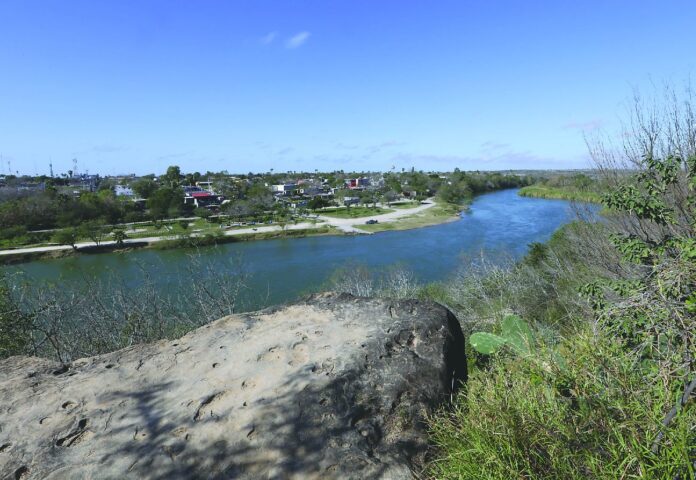As officials in Starr County prepare to meet with federal officials on border wall construction there, they’ve settled on a goal to shift construction closer to the river bank, a change from what maps have shown the current plans to be.
Rose Benavidez, president of the Starr County Industrial Foundation, told the county commissioners during a meeting Monday, they would push for bulkhead flood wall — instead of the proposed steel bollards — that would be at the riverbank and not encroach too much in the community.
That proposal, she said, emerged after meeting with local officials throughout the county with whom Customs and Border Protection are required to reach an agreement with over the border wall. Those officials included the mayors of every community along with several of their commissioners.
“We have been having conversations since this proposal was first brought to light, and one of the things that everyone feels pretty adamant about is that there is, we hope, the ability to have some conversations about the alignment,” Benavidez said Tuesday afternoon. “Quite frankly, the biggest concern we have is just simply that there are several of our communities that — the way the alignment shows now — would be affected quite significantly.”
She pointed specifically to the city of Roma’s downtown area, its historic district, as one that would be affected by the current proposed alignment of the wall.
A bulkhead flood wall, however, would be placed at the riverbank and preserve the downtown area by keeping it north of any border barrier.
Bulkhead walls are typically placed along the banks of lakes or rivers to essentially protect property from flooding.
“The banks are high enough there where they could work on doing something, and that would serve as a deterrent for illegal activity,” Benavidez said, “but preserve the integrity of the international boundary and the riverbank.”
“But more importantly,” she added, “(it) would also ensure that we allow as much potential future development in the area surrounding the ports that we possibly could instead of having much of that property be on the south side of any barrier.”
The idea for a bulkhead has gained popularity in recent months as city officials in Laredo announced their support for such a structure in January.
In the past, the Secure Fence Act of 2006 only required the Department of Homeland Security to consult with local officials over the construction of border barriers but in February, U.S. Rep. Henry Cuellar announced in a news release he had secured language in the 2019 appropriations package that requires CBP officials to reach mutual agreements with local elected officials in Roma, Escobares, Rio Grande City, La Grulla and Salineño.
“This language ensures that CBP reaches mutual agreements with local communities prior to the construction of any barrier in Starr County,” Cuellar stated in the release. “It encourages cooperation with all parties involved, making sure that communities at the border have a voice at the table.”
During Monday’s commissioners court meeting, Starr County Judge Eloy Vera — along with officials with the Industrial Foundation and the Starr Camargo Bridge Company — was granted authorization to represent the county in those talks.
That authorization, approved by the commissioners court, would allow them to visit in those meetings “when necessary so that if we can’t get everyone together, we have an opportunity to pass a message forward,” Benavidez told the commissioners.
“We want to make sure that our people are taken into account as to what it is that they would like or wouldn’t like,” Vera said on Tuesday. “We’re willing to negotiate with them, something that they think is feasible and reasonable and at the same time, something that we can live with.”
Regional, local, state and federal agency officials have already been meeting regularly with a follow up meeting scheduled for next week, Benavidez said Tuesday, adding that local officials expect to make a trip to Washington, D.C. in the next couple of weeks.
The communities and the federal government were given until Sept. 30 to reach an agreement.
“It doesn’t mean that that would be the-end-all, but the idea is to try and get something done that they’re mutually happy with between now and then.”
She added that what’s been made clear through city and county leadership is that the community is in favor of border security but they also have an obligation to the citizens who are being affected.
“So we want to ensure that what is being done is being done responsibly but also (in) the most effective way,” she said, “because we live in these communities and we have to ensure that whatever is ultimately constructed is something that has the ability to have the least detrimental affect to this area.”





